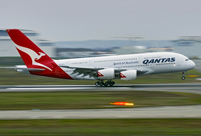 Ballerinas anywhere but onstage
Ballerinas anywhere but onstage
 Top 10 safest airlines in the world
Top 10 safest airlines in the world
 Top 10 most popular instant messaging apps in the world
Top 10 most popular instant messaging apps in the world
 Inspiring shadow images of Chinese army
Inspiring shadow images of Chinese army
 Models shine Xinjiang auto show
Models shine Xinjiang auto show
 From laid-off worker to int'l referee in bodybuilding
From laid-off worker to int'l referee in bodybuilding
 Selected photos of 'two sessions'
Selected photos of 'two sessions'
 Most unusual taxis around the world
Most unusual taxis around the world
 Bridge Worship Festival in Taijiang, SW China
Bridge Worship Festival in Taijiang, SW China
BEIJING, March 20 -- The ever-growing Chinese middle class, especially the upper middle class, will lead to a "more mature and attractive" market for businesses, according to an industry report from a global consulting firm.
"The explosive growth of China's middle class has brought sweeping economic change and social transformation to China," said the report from McKinsey & Company on Thursday.
As recently as 2000, only 4 percent of urban households in China was middle class, whose annual household disposable income ranged between 60,000 RMB yuan (about 9,760 U.S. dollars) and 229,000 yuan; by 2012, that share had soared to 68 percent, said the report released prior to the China Development Forum scheduled to begin on Saturday.
Relative to the mass middle class, upper middle class consumers are already more willing to "pay a premium for quality products, have a higher level of trust in well-known brands," according to the report.
The company divides the Chinese middle class into two segments: the mass middle class whose annual household income ranges between 60,000 yuan and 106,000 yuan, accounting for 54 percent of all urban households in 2012, and the upper middle class whose annual household income ranges between 106,000 yuan and 229,000 yuan, accounting for 14 percent of urban households that year.
This structure should look very different by 2022 when the upper middle class could account for 54 percent of total urban households, predicted the firm.
"China's upper middle class consumers are becoming more mature. They decreasingly perceive shopping as a desirable family activity, spending significantly more time on leisure activities and travel than they did a decade ago," noted the report.
To support this, China's hotel room capacity quadrupled between 2000 and 2012 and since 2010 the annual growth rate of cinema ticket receipts has exceeded 30 percent, with more than 1,000 new cinemas opening in 2013 alone, said the firm.
"China's expanding upper middle class is much more outward looking than the broad swath of Chinese citizens -- a dramatic break from the past that has broad implications for their consumption behavior. This group is much more willing to buy foreign brands. Foreign-branded food and beverages are favored by 34 percent of upper-middle class urbanites compared with 24 percent of all city dwellers," said the report.
While China's middle class expansion is largely happening in cities and will continue there, it will become much evenly spread geographically. In 2002, 40 percent of China's urban middle class lived in tier 1 megacities including Beijing and Shanghai. However, this share is expected to decline to 16 percent in 2022, and the share will rise in tier 2 and tier 3 cities, forecasted the firm.
 Female journalists at 'two sessions'
Female journalists at 'two sessions' Interpreters serving 'two sessions'
Interpreters serving 'two sessions' Female SWAT team in Chongqing
Female SWAT team in Chongqing Top 10 safest airlines in the world
Top 10 safest airlines in the world Old photos of Anti-Japanese War
Old photos of Anti-Japanese War Mysterious 'Dolan Tribe' in Xinjiang
Mysterious 'Dolan Tribe' in Xinjiang A bite of Luoping County
A bite of Luoping County This is Shanghai
This is Shanghai Chinese airborne troops complete parachute training in various training bases
Chinese airborne troops complete parachute training in various training bases Ballerinas anywhere but onstage
Ballerinas anywhere but onstage Most unusual taxis around the world
Most unusual taxis around the world Micro-expression at 'two sessions'
Micro-expression at 'two sessions' Bridge Worship Festival in Taijiang, SW China
Bridge Worship Festival in Taijiang, SW China Hollywood documentary brings Diaoyu Islands truth to new audience
Hollywood documentary brings Diaoyu Islands truth to new audience Miss HK and actresses shine at flower show
Miss HK and actresses shine at flower showDay|Week|Month